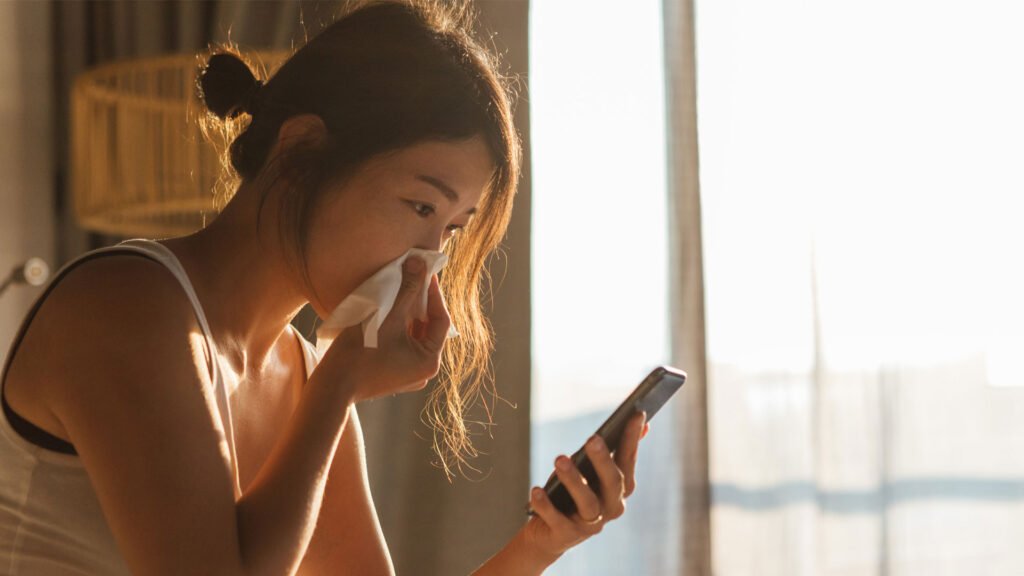If there’s one time of year I used to dread, it was spring. While everyone else seemed to celebrate the warmer weather, blooming flowers, and longer days, I was holed up inside, tissues in hand, eyes red and puffy, sneezing up a storm. Yes, I’m talking about allergy season—my personal nemesis. For years, I struggled through it, resigned to the idea that a few weeks of misery were just my annual fate. But then, I discovered something that changed everything: air purifiers.
I want to share with you how air purifiers helped me survive allergy season, and why I believe they can make a huge difference for you too. If you’re tired of feeling like you’re under siege every spring (or fall, or whenever your allergies flare up), read on. There’s hope, and it comes in the form of clean, filtered air.
My Allergy Struggles
I’ve been dealing with allergies for as long as I can remember. As a kid, I was always the one with the runny nose, itchy eyes, and constant sneezing. It wasn’t just an inconvenience—it was a constant source of discomfort. As I got older, I learned to expect it. I stocked up on allergy medications, avoided going outside during peak pollen times, and kept my windows shut tight. But despite all these precautions, I still found myself suffering every year.
It was frustrating because I wanted to enjoy the outdoors, go for walks, and breathe in the fresh spring air. Instead, I felt like I was trapped in a cycle of symptoms that nothing could relieve. That’s when I started looking for other solutions. I read about air purifiers and how they could help with indoor air quality. I figured, why not give it a try? Little did I know, it would be one of the best decisions I’d ever make.
Do Air Purifiers Help with Seasonal Allergies?
The short answer is yes, they do. But let me tell you how.
Air purifiers work by pulling in air from the room, passing it through a series of filters, and trapping harmful particles like dust, pollen, pet dander, and mold spores. The clean air is then released back into the room. The most effective air purifiers use HEPA (High-Efficiency Particulate Air) filters, which can capture up to 99.97% of particles as small as 0.3 microns. To put that in perspective, pollen particles are usually around 10 to 100 microns in size, so a HEPA filter can easily capture them.
For someone like me, who’s sensitive to pollen, this was a game-changer. I remember the first time I used an air purifier during allergy season. I set it up in my bedroom and let it run overnight. The next morning, I woke up and, for the first time in a long time, I could breathe without discomfort. My nose wasn’t stuffy, my eyes weren’t itchy, and I didn’t start the day with a sneezing fit. It was a revelation.
How to Use an Air Purifier for Allergies
If you’re thinking about getting an air purifier to help with your allergies, here are some tips on how to use it effectively:
- Choose the Right Location: Place your air purifier in the room where you spend the most time. For most people, this is the bedroom. Since we spend a significant portion of our day sleeping, having clean air in the bedroom can make a big difference. You might also consider placing an air purifier in your living room or home office if you spend a lot of time in those areas.
- Keep Windows and Doors Closed: To maximize the effectiveness of your air purifier, keep windows and doors closed while it’s running. This helps prevent new allergens from entering the room and allows the air purifier to clean the air more efficiently. I know it’s tempting to open the windows on a nice day, but during peak allergy season, it’s best to keep them shut.
- Run It Continuously: Air purifiers work best when they run continuously. This ensures that the air in the room is constantly being filtered, and it helps maintain a lower level of allergens. Most modern air purifiers are designed to be energy-efficient, so you don’t have to worry about high electricity bills. I keep my air purifier running all day and night during allergy season, and it’s made a huge difference.
- Change the Filters Regularly: Regular maintenance is key to keeping your air purifier effective. Check the manufacturer’s recommendations for how often to replace the filters, and make sure to do it on schedule. A clogged or dirty filter won’t work as well, and it could even release trapped particles back into the air. I set a reminder on my phone to check the filters every few months, so I never forget.
- Combine with Other Allergy Management Strategies: While air purifiers are incredibly helpful, they’re most effective when used in combination with other allergy management strategies. This might include taking allergy medication, washing bedding regularly, vacuuming with a HEPA filter vacuum, and showering before bed to remove pollen from your hair and skin. By taking a comprehensive approach, you can minimize your exposure to allergens and keep your symptoms under control.
The Benefits I’ve Experienced
Since I started using an air purifier, allergy season has become much more manageable. I no longer wake up feeling like my head is full of cotton. I can go through the day without constantly reaching for tissues, and my eyes aren’t red and swollen. I can actually enjoy being at home, and I don’t feel like I have to avoid certain rooms because they make my allergies worse.
But it’s not just about the physical symptoms. Having an air purifier has improved my overall quality of life. I feel more comfortable, more relaxed, and more at ease in my own home. I can focus better, sleep better, and enjoy the little things, like reading a book or watching a movie, without being distracted by allergy symptoms. It’s made me realize how much our environment affects our health and well-being.
What to Look for in an Air Purifier for Allergies
If you’re ready to invest in an air purifier to help with your allergies, here are some things to consider:
- HEPA Filter: A HEPA filter is essential for capturing small particles like pollen, dust, and pet dander. Make sure the air purifier you choose has a true HEPA filter, not just a “HEPA-type” or “HEPA-like” filter.
- Coverage Area: Check the manufacturer’s recommendations for the size of the room the air purifier can effectively clean. Choose a model that’s suitable for the size of the room where you’ll be using it.
- CADR Rating: The Clean Air Delivery Rate (CADR) indicates how quickly an air purifier can clean the air in a room. Look for a model with a high CADR rating for allergens to ensure it can handle your allergy needs.
- Noise Level: If you plan to use the air purifier in your bedroom, consider the noise level. Many air purifiers have a “quiet mode” or “sleep mode” to minimize noise while still cleaning the air effectively.
- Filter Replacement: Check how often the filters need to be replaced and the cost of replacement filters. Regular filter replacement is essential for maintaining the effectiveness of the air purifier.
Allergy season doesn’t have to be a time of suffering and discomfort. With the right tools, you can take control of your environment and reduce your exposure to allergens. For me, using an air purifier has been a game-changer. It’s made my home a sanctuary where I can breathe easily, relax, and enjoy life without the constant distraction of allergy symptoms.
If you’re tired of feeling like a prisoner in your own home during allergy season, I encourage you to try an air purifier. It’s a small investment that can make a big difference. Breathe easier, sleep better, and enjoy the beauty of the changing seasons without the misery of allergies. Trust me, it’s worth it.



